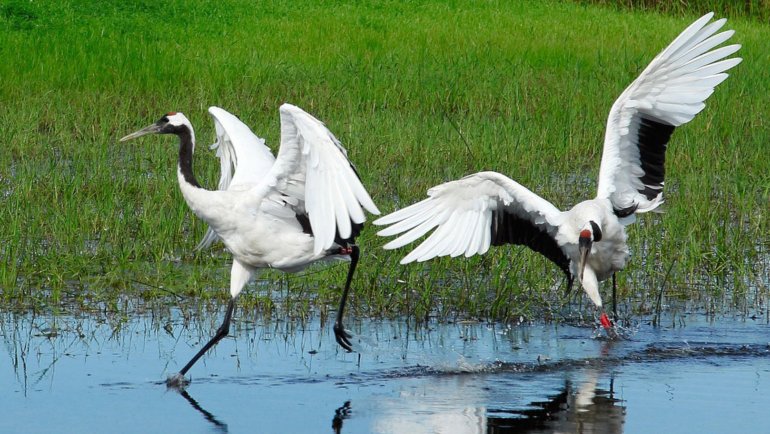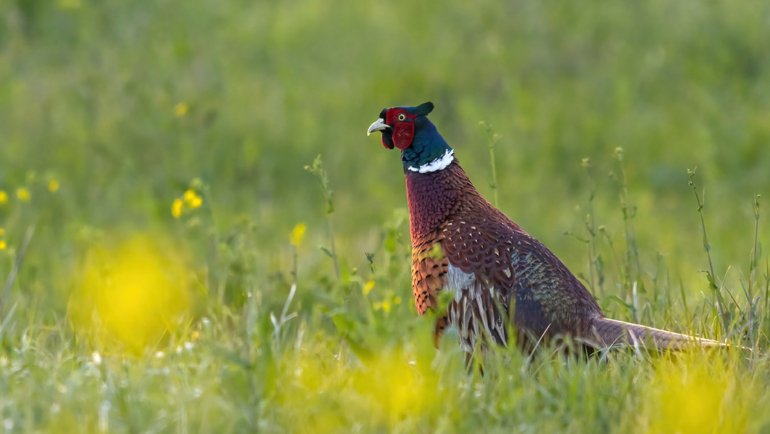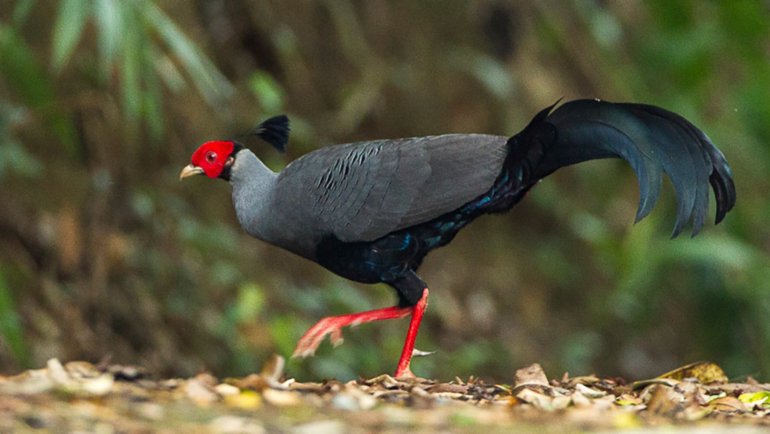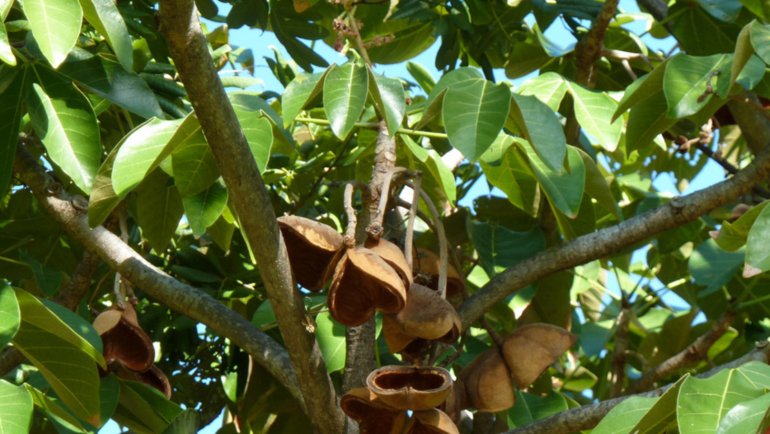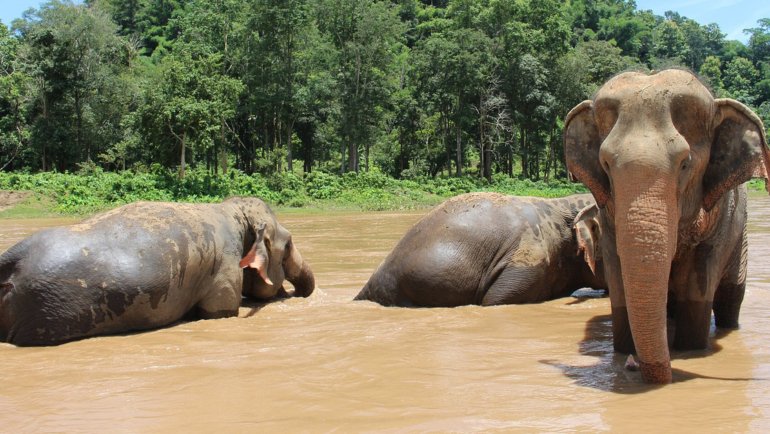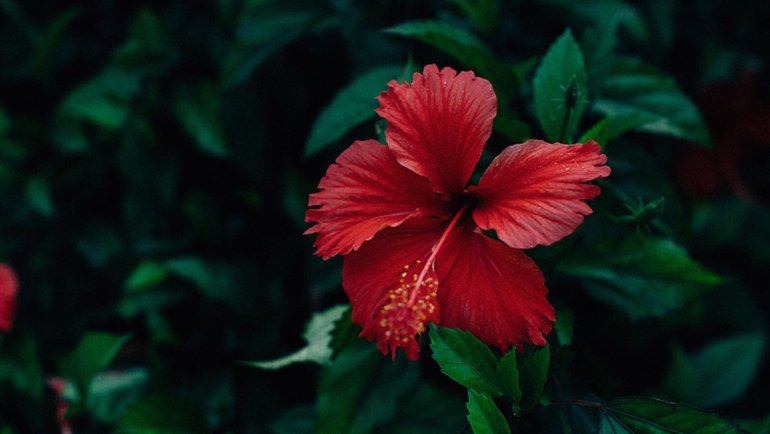Hey there, nature lovers! Today, we’re diving into the captivating world of Iran’s national animal – the Asiatic Lion. Iran, with its rich history and diverse landscapes, is a land of many wonders, but did you know that it’s also linked to one of the most majestic animals on the planet?
That’s right, the Asiatic Lion, a creature of strength and beauty, has deep roots in Iranian culture and history. But here’s a twist – while these lions are celebrated in Iran, they’re not roaming the Iranian wilds today. Intrigued? Let’s unravel the story of these magnificent beasts and discover why they’re so iconic in Iran!
Quick Info About The Asiatic Lion
| Scientific Name: | Panthera leo persica |
| Average Size: | Males: 2.7 – 2.9 meters (8.9 – 9.5 ft) including tail; Females: 2.4 – 2.6 meters (7.9 – 8.5 ft) including tail |
| Average Weight: | Males: 160 – 190 kg (350 – 420 lbs); Females: 110 – 120 kg (240 – 260 lbs) |
| Average Lifespan: | In the wild: 16-18 years; In captivity: Up to 20 years |
| Geographical Range: | Historically: Across Southwest Asia, including Iran; Currently: Only in Gir Forest, India |
| Habitat: | Dry deciduous forests, scrublands, grassy plains |
| Conservation Status: | Endangered |
Meet the Asiatic Lion, National Animal of Iran
Let’s get up close and personal with the Asiatic Lion, a true emblem of Iran’s natural heritage. Picture this: a majestic creature with a proud mane and a gaze that commands respect.
The males are particularly striking with their impressive manes, which are slightly smaller and lighter in color compared to their African relatives. Females, sleek and powerful, lack the mane but share the same regal demeanor.
In terms of size, Asiatic Lions are slightly smaller than African Lions, but what they lack in size, they make up for in their majestic presence. Their coat is a tawny color, and they have a fold of skin along their belly, unique to this subspecies.
Now, where do these kings and queens of the jungle stand in the ecosystem? Asiatic Lions sit right at the top of the food chain. They’re apex predators, meaning they have no natural predators of their own.
Their diet mainly consists of large ungulates like deer, antelope, and wild boar. By controlling the population of these herbivores, Asiatic Lions play a crucial role in maintaining the balance of their ecosystem.
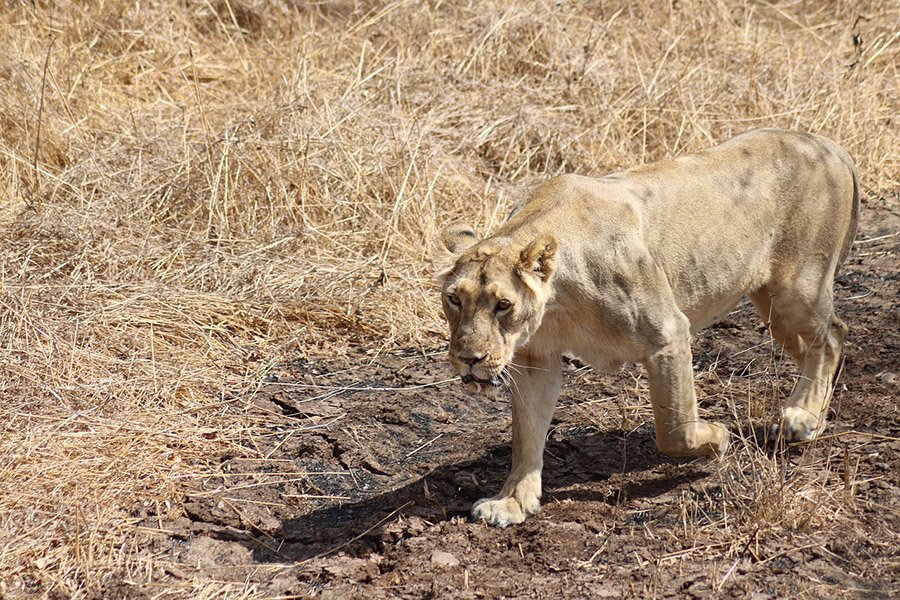
Where Does The Asiatic Lion Live?
Now, let’s talk habitat. Historically, Asiatic Lions roamed across the Middle East, including the landscapes of Iran, where they were a symbol of royalty and power. Imagine these majestic creatures wandering through Iran’s diverse terrains, from forested areas to dry grasslands.
Today, however, the only surviving population of Asiatic Lions is found in the Gir Forest National Park in India. This area is characterized by dry deciduous forests and scrublands, interspersed with grassy plains – an ideal habitat for these lions. The climate here is quite varied, with a mix of dry and monsoon seasons.
While the Asiatic Lion no longer roams the lands of Iran, its legacy lives on in the country’s culture and history. So, as we journey through this story, let’s remember the majestic Asiatic Lion – a symbol of Iran’s rich natural heritage, even though it now only exists in the distant lands of India.
Why and When Did The Asiatic Lion Become The National Animal of Iran?
The Asiatic Lion, with its dignified stature and commanding presence, symbolizes strength, courage, and nobility – traits deeply revered in Iranian culture. But why, you might ask, is an animal no longer present in the country revered as a national symbol? The answer lies in Iran’s rich history and cultural symbolism.
The Lion and Sun motif, featuring prominently in Iranian iconography until the revolution of 1979, holds a special place in this story. This emblem, believed to have roots in the ancient Mesopotamian civilization, represents the astrological sign of Leo, with the sun positioned in the house of Leo, symbolizing power, sovereignty, and divinity.
The lion, often associated with the sun in various cultures, resonates with these themes, symbolizing not only physical strength but also spiritual and moral fortitude.
Historically, the lion’s image was extensively used in royal emblems and flags, signifying the power and grandeur of the Persian Empire. This deep-seated connection between the Asiatic Lion and Iranian identity persisted even after the lion disappeared from the country’s landscapes. The lion’s symbolism transcends its physical presence, embodying values that are a cornerstone of Iranian heritage.
However, the transition to the Islamic Republic in 1979 saw the Lion and Sun symbol being replaced with a more religious emblem. This change reflects the complex interplay of politics, religion, and cultural identity in Iran’s history. While the Asiatic Lion’s status as a national symbol might not be officially recognized today, its historical and cultural significance remains deeply ingrained in the Iranian psyche.
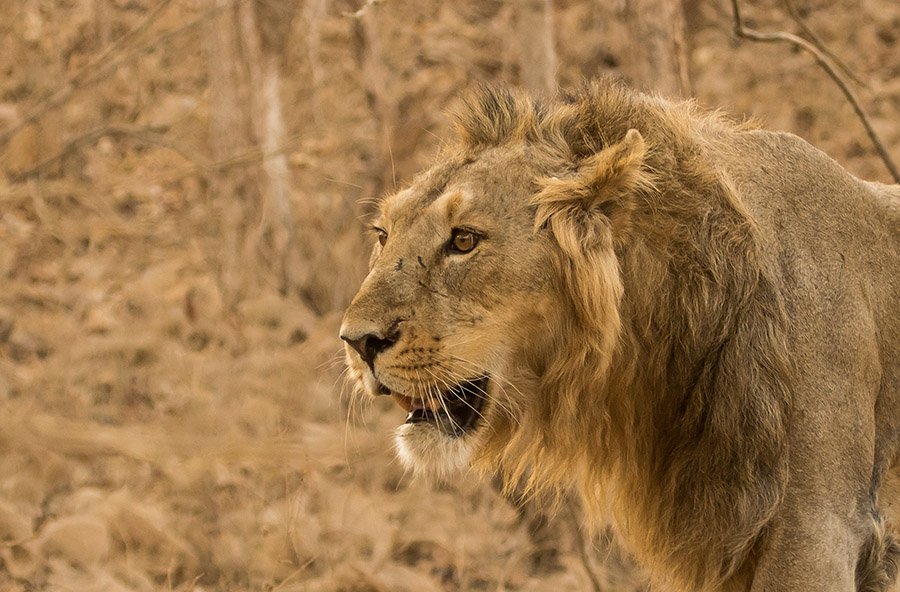
Where is The Asiatic Lion Featured in Iran?
The Asiatic Lion’s most prominent feature in Iran was in the national flag, where the Lion and Sun symbol served as a central emblem until 1979. This powerful image was not just a national emblem but also a cultural icon, appearing in various forms of art, architecture, and national symbols throughout Iran’s history.
In addition to the flag, the lion motif has been a recurrent theme in Iranian literature, folklore, and art, symbolizing bravery, valor, and royalty. It’s common to find the lion in historical architecture, sculptures, and paintings, often depicted alongside the sun, reinforcing its connection to strength and imperial power.
While the Asiatic Lion no longer physically roams the Iranian lands, its legacy continues to resonate through these cultural and historical representations, maintaining its status as a symbol of Iranian pride and heritage.
Names of The Asiatic Lion
The Asiatic Lion, scientifically known as Panthera leo persica, is known by various names across different regions and cultures. In Iran, where it holds significant historical and cultural value, it is often referred to as “Shir-e-Irani,” translating to “Iranian Lion.” This name underscores its deep connection with Iranian identity and heritage.
In other parts of its historical range, the Asiatic Lion is also known by different names reflecting local languages and traditions. For instance, in India, where the only existing wild population of Asiatic Lions is found, it’s commonly known as the “Indian Lion” or “Jungle King.”
Is The Asiatic Lion Endangered?
Unfortunately, the Asiatic Lion is currently listed as Endangered on the IUCN Red List. The primary threats to this majestic species include habitat loss, human-wildlife conflict, and reduced genetic diversity due to its small population size. Poaching, although less common, also poses a significant threat.
Conservation efforts for the Asiatic Lion have been primarily focused in India, especially in the Gir Forest National Park, where innovative strategies have been implemented.
These include habitat preservation, creating corridors to connect isolated lion populations, and engaging local communities in conservation efforts. Successful conservation programs have seen a gradual increase in their population, but the Asiatic Lion’s future remains precarious.
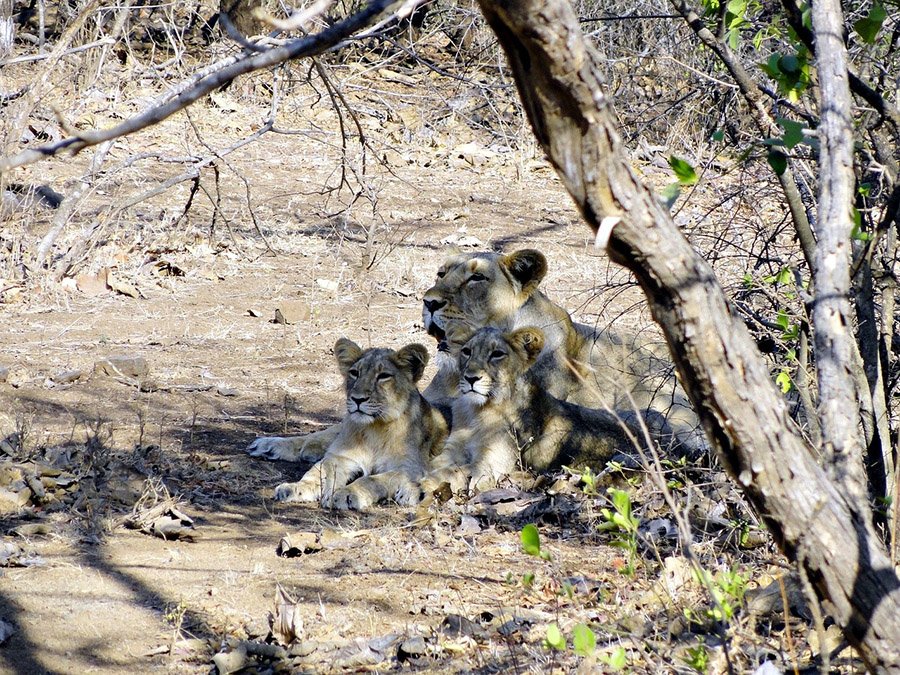
Interesting Facts About The Asiatic Lion
- Distinctive Social Structure: Unlike African lions, Asiatic lions are known for their relatively smaller pride sizes, often comprising fewer members. This unique social behavior is adapted to their specific ecological conditions.
- Cultural Icon: The Asiatic Lion has been a symbol of strength and royalty in Iranian culture for millennia, prominently featured in art, literature, and national symbols.
- Historical Range: Historically, Asiatic Lions roamed across Southwest Asia, including Iran, making them an integral part of the region’s natural history.
- Unique Genetic Traits: The Asiatic Lion differs genetically from its African counterparts, displaying distinct morphological features, such as a less pronounced mane in males and a longitudinal fold of skin along their belly.
- Survival Adaptations: Adapted to a variety of habitats, Asiatic Lions have developed unique hunting techniques suited to their environment, including cooperative hunting strategies.
- Symbol in Astrology: The lion’s connection with the sign of Leo in astrology highlights its significance in Iranian culture, intertwining celestial symbolism with natural heritage.
Other Beautiful Animal Symbols of Iran
- Asiatic Cheetah: Known as the “Iranian Cheetah,” this critically endangered species is a symbol of agility and grace. With less than a dozen remaining in Iran, it represents both the natural beauty and the conservation challenges faced by the country.
- Persian Leopard: Majestic and elusive, the Persian Leopard is a symbol of Iran’s diverse wildlife. Its presence in Iranian folklore and art highlights its cultural significance.
- Persian Cat: Famous worldwide for its elegant appearance and gentle temperament, the Persian Cat is a symbol of luxury and beauty, reflecting Iran’s rich cultural heritage.
- Persian Fallow Deer: Once widespread, now endangered, this deer is a symbol of the natural beauty and ecological diversity of Iran’s forests and plains.
Frequently Asked Questions
How many Asiatic Lions are left in the world?
There are about 500-600 Asiatic Lions left, all of which are found in the Gir Forest National Park in India.
Why is the Asiatic Lion important to Iran if it no longer lives there?
The Asiatic Lion is a powerful symbol of Iran’s royal and cultural heritage. Despite its physical absence, it represents strength, nobility, and the rich history of Iran.
Is the Persian Leopard different from other leopards?
Yes, the Persian Leopard is a distinct subspecies, known for its larger size and unique coat pattern, adapted to the mountainous habitats of Iran and neighboring regions.
What efforts are being made to conserve the Asiatic Cheetah in Iran?
Conservation efforts include habitat protection, anti-poaching measures, and research initiatives. However, the situation is extremely critical, with only a dozen individuals remaining.
Are Persian Cats originally from Iran?
Yes, Persian Cats are believed to have originated in Iran (formerly Persia). They were later brought to Europe, where they became one of the most popular cat breeds.
What’s the difference between African and Asiatic Lions?
Asiatic Lions are generally smaller, with a less dense mane in males. They also have a distinct skin fold along their belly and live in smaller pride groups compared to African Lions.
